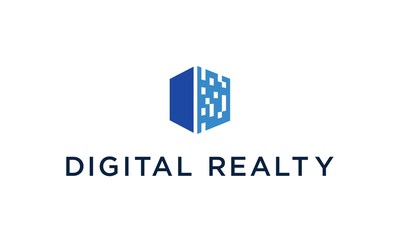Digital Realty & Zayo plan next gen fiber interconnection and security capabilities
Digital Realty, the largest global provider of carrier- and cloud-neutral data center, colocation and interconnection solutions, announced today a significant step in its plan to create next-generation interconnection and security capabilities and build the largest open fabric-of-fabrics interconnecting key centers of data exchange.
As part of this development strategy, Digital Realty is working with Zayo Group Holdings, Inc., a leading global provider of fiber-based communications solutions, to lay the physical and virtual foundations of a new open fabric.
This collaboration represents a significant milestone on the cross-industry roadmap outlined earlier this year in Digital Realty’s industry manifesto for open interconnection and next-generation colocation solutions. The collaborative approach aims to unlock trapped value and remove legacy barriers to digital transformation by more closely aligning with the hybrid IT and security considerations of multinational enterprises. 
“As businesses continue to shift globally towards hybrid IT to enable new digital workplace models, create new lines of business, and control costs, Zayo and Digital Realty are in an excellent position to enable customers’ growth through a shared interest in globally secure, software-defined interconnection,” said Brian Lillie, Chief Product and Technology Officer at Zayo. “We look forward to working together to power next-generation interconnection and security capabilities that will unlock the true potential of digital transformation.”
This initiative builds upon new and existing innovative capabilities, including PlatformDIGITAL®, Digital Realty’s first of its kind global data center platform, which already brings together over 4,000 participants in connected data communities around the world, as well as Zayo’s extensive global fiber network. The new collaboration also follows Digital Realty’s recent announcement of its plan to build native SDN-enabled multi-platform orchestration and global fabric connectivity across its global platform.
“We’re excited to advance our roadmap for removing the legacy interconnection barriers that continue to impede enterprise digital transformation initiatives,” said Digital Realty Chief Technology Officer Chris Sharp. “Our platform capabilities and the steps we are taking in collaboration with Zayo will serve as a force-multiplier in building the industry’s largest open fabric-of-fabrics to effectively address the growing intensity of enterprise data creation and its gravitational impact on IT architectures.”
Digital Realty’s Data Gravity Index DGx™ projects that Forbes global 2000 enterprises will be adding storage at a combined rate of more than 620 terabytes per second for data aggregation and exchange across 53 metros by 2024. This rapid growth reflects a growing trend among global customers towards deploying and connecting large, private data infrastructure footprints across multiple global locations.
Gartner® predicts that by 2023, over 50%1 of the primary responsibility of data and analytics leaders will comprise data created, managed, and analyzed in edge environments. As a result, a new pervasive data center infrastructure is needed to enable digitized endpoints and mobile users to fully participate in globally distributed workflows. By removing legacy barriers across the interconnection industry, the consortium approach seeks to enable connected data communities and to support transformative outcomes for customers across all industries.
References:
Media & Industry Analyst Relations:
Marc Musgrove, Digital Realty, +1 (415) 508-2812
[email protected]
One thought on “Digital Realty & Zayo plan next gen fiber interconnection and security capabilities”
Comments are closed.



Gary Bolton, the president and CEO of the Fiber Broadband Association, said that there’s public and private sector investment in broadband on the horizon. In an interview with Light Reading, he noted there’s no need to wait on the infrastructure bill to start fiber expansion. “If you look at right now, what’s already been appropriated – $9.2 billion for RDOF – so that’s going to start coming out. That’s going to be fueling us right now,” Bolton said. “Plus there are other programs. As a matter of fact, you know, California had a $7 billion state surplus that they just unanimously approved for broadband. And that’s just one state.”
C-Spire CEO Hu Meena said that government funding for broadband infrastructure should be fiber-focused, not carved up between satellite, fixed wireless, cable broadband and telecom DSL. “For too long, policymakers have focused on making broadband funds technology-neutral; our country can no longer take that stance if we want to be competitive,” he said.
“Americans are no longer satisfied with copper technologies, that should have gone the way of the typewriter and the fax machine. Today, policymakers, debating over [broadband] speeds is a disservice to our country and is simply a result of incumbents trying to maintain the status quo, and being paid extra to do.”
Windstream’s CEO Tony Thomas pointed out that there are, by his estimates, 42 million homes that “are not connected to adequate broadband in the US. That is the challenge in front of us,” he said. “The other challenge is a third of the folks who do have broadband in the country have adjusted gross income of less than $30,000 and struggling to pay their bills. We have to conquer both of these elements to truly conquer the digital divide.”
https://www.lightreading.com/opticalip/fttx/the-great-fiber-buildout-awaits/d/d-id/771134?